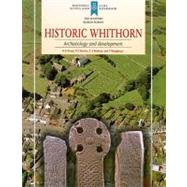Historic Whithorn: Archaeology and Development
, by Martin, P. F.; Mckean, C. A.; Neighbour, T.; Oram, R. D.- ISBN: 9781902771823 | 1902771826
- Cover: Paperback
- Copyright: 7/27/2010
This survey gives an accessible and broad-ranging synthesis of the history and archaeology of Whithorn and the nearby Isle of Whithorn, and aims to inform conservation guidance for future development. Situated at a southern tip of Galloway, in the old county of Wigtownshire, the historic burgh of Whithorn is one of the oldest Christian sites in the UK. The origins of the settlement date back to the mid-fifth century AD and the first monastery may have been founded in the sixth century. Traditionally, the monastery is the burial place of St Ninian. By the tenth or eleventh century a town-like settlement had developed around the monastic site and in 1312-15 this was relocated to the line of what is now George Street. At around the same time the community was created, so was a burgh of barony for the prior of Whithorn. Pilgrimage was a very profitable activity for the town and the nearby settlement of Isle of Whithorn, a port for pilgrims and goods. Whithorn was home to a notable school of sculpture in the late first millennium AD and numerous examples of carved stones have been found, and continue to be found, both on the site of the priory and reused in later buildings around the town. While technically a burgh of barony, the prior enjoyed trading rights and after the Reformation Whithorn was accepted as a de facto royal burgh. However, in the absence of pilgrims, and with its only income now from harbour dues at the Isle, the burgh's fortunes declined rapidly. The economy became dependent on trade in cattle and other agricultural goods, and fluctuated greatly during the eighteenth and nineteenth centuries, in competition with neighbouring ports such as Stranraer. There was a brief resurgence of pilgrimage in the early to mid-twentieth century, and today the focus is on tourism. The book examines Whithorn's historic development from the earliest settlement through the medieval period, the significance of the priory, and its subsequent role as a small market town. The town has received very little archaeological investigation compared to that for the priory, and so the authors consider where the areas of archaeological potential lie, in order to inform the future management of Whithorn's historic environment. Distinctive building types are identified and the characterisation of the town is mapped.







